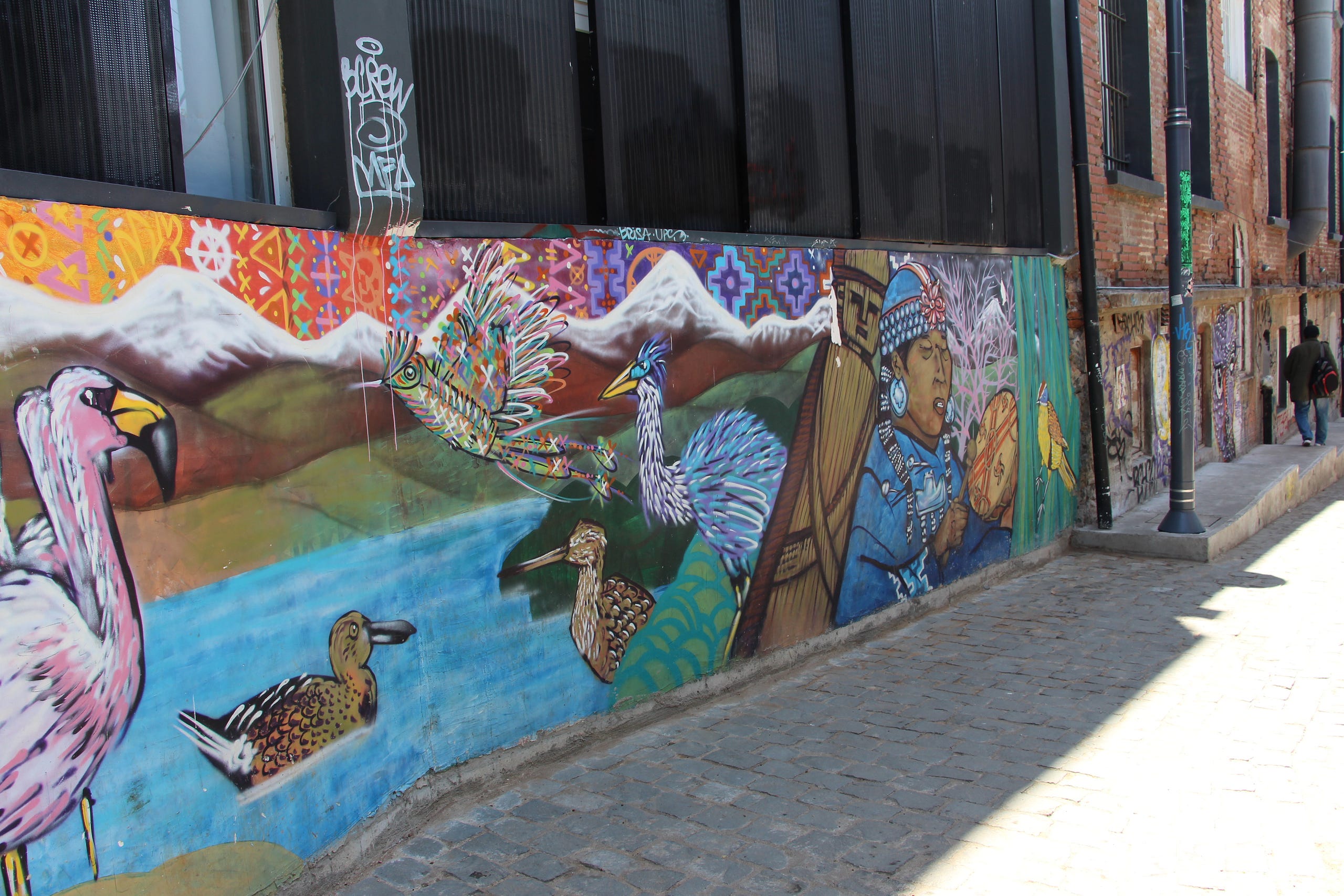What does EQUITY look like?

Street Art in Valparaiso, Chile
Every person lives in two worlds. The outer world: tangible elements from nature, human history, emerging and diverging culture, changing society, cities and our unique upbringing; and the inner world: our own personal canvas where we design and redesign our life with the colors of our emotions, thoughts, opinions, behaviors as they unfold in our experience.

Art by an anonymous middle school student in Santiago, Chile.
And it is the interplay of these two worlds within every citizen that creates a dominant collective narrative which either propagates or hinders justice in a community, neighborhood, city, state and/or nation. As a member of this planet, I envision my life to be a continual learning journey that shapes and expands that collective narrative towards inclusion and equity. But that is easier said than done. And as of now my journey has brought me to this question: How can we bring equity within the external and internal worlds of every human being? How can we affect the stories a parent tells their child and also how the child rewrites those stories?
To explain how I envision answering that I present an analogy. Imagine two arms reaching out to shake hands.

One ‘hand’ represents the various systems, structures, policies, to support individuals or communities to get a chance at prosperity. The other ‘hand’ is of a specific individual, recognizing her needs, seeking out the available support. Our world, gratefully has innumerable artists, activists, non profits, aid organizations, social entrepreneurs all trying to increase the number and types of ‘hands’ available across all sectors including health, education and housing. However, if the people these are being created for do not extend their hands, equity does not prevail. Both of these conditions are equally important.
Therefore what I am passionate about is to sprout the seeds of internal agency within every individual of every community. For individuals to know and decide to extend their ‘hands’ and make use of the available support. And if support does not exist yet, to courageously voice their (or their neighbor’s) concerns and create new solutions themselves.

Street Art by Mr. Papilion, Valparaiso, Chile
One of the many tools to do this, I think, is Human Centered Design. This method and mindset — of partnering with a person to know their context, understand their internal world and co-create solutions that fulfill their unique needs — is powerful and I have seen its impact through my work as a social entrepreneur and human centered designer.

Middle School Students in Lima, Peru brainstorming solutions to big social problems in their communities using Human Centered Design
This and many other tools are already being applied with success to bring us awesome products and services. And now let’s bring it into the conversation about equity, to the poorest neighborhoods, specifically lets create the space, tools, frameworks, programs, or art that build the internal agency of people, communities and cities! Because each of us adds to that collective narrative of society through our art, work and lives; and because more empowered minds manifest an inclusive and just external world for all of us to live in.